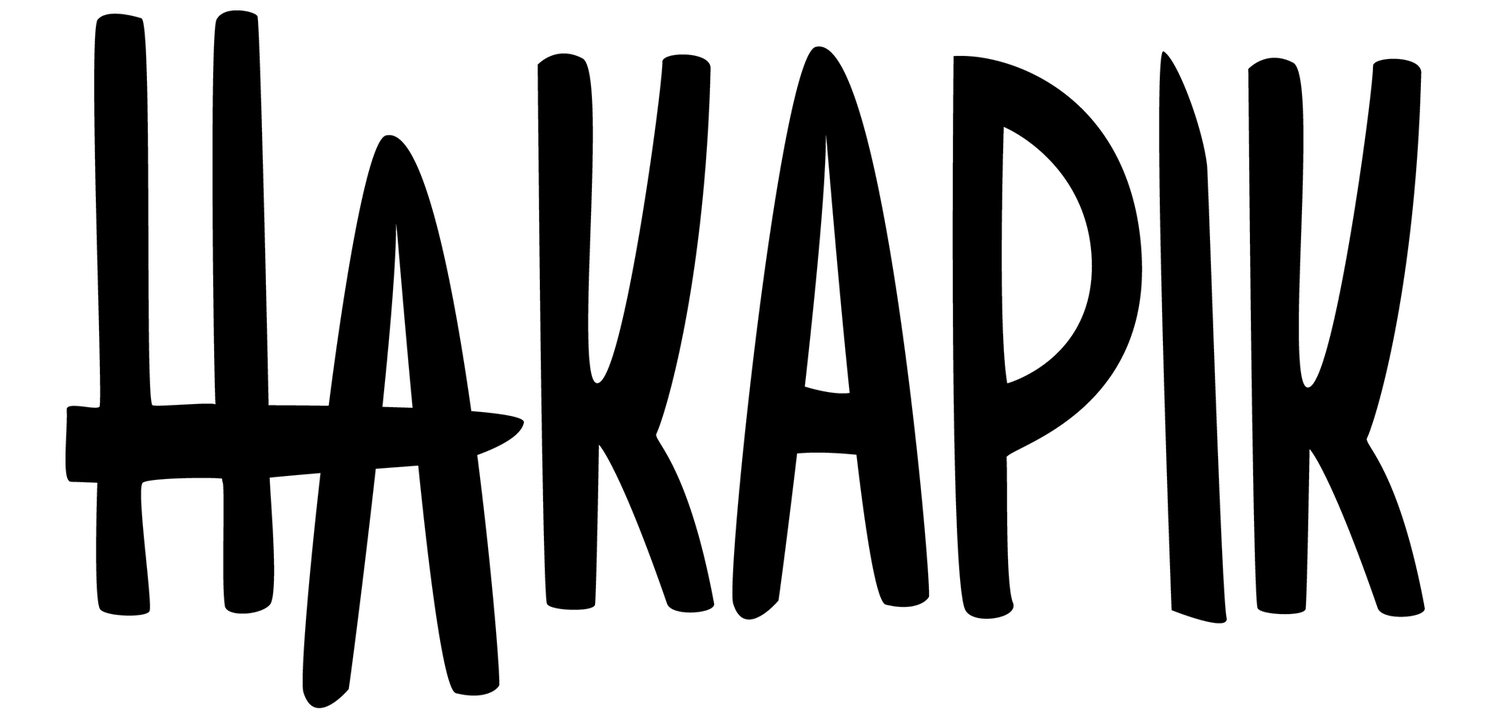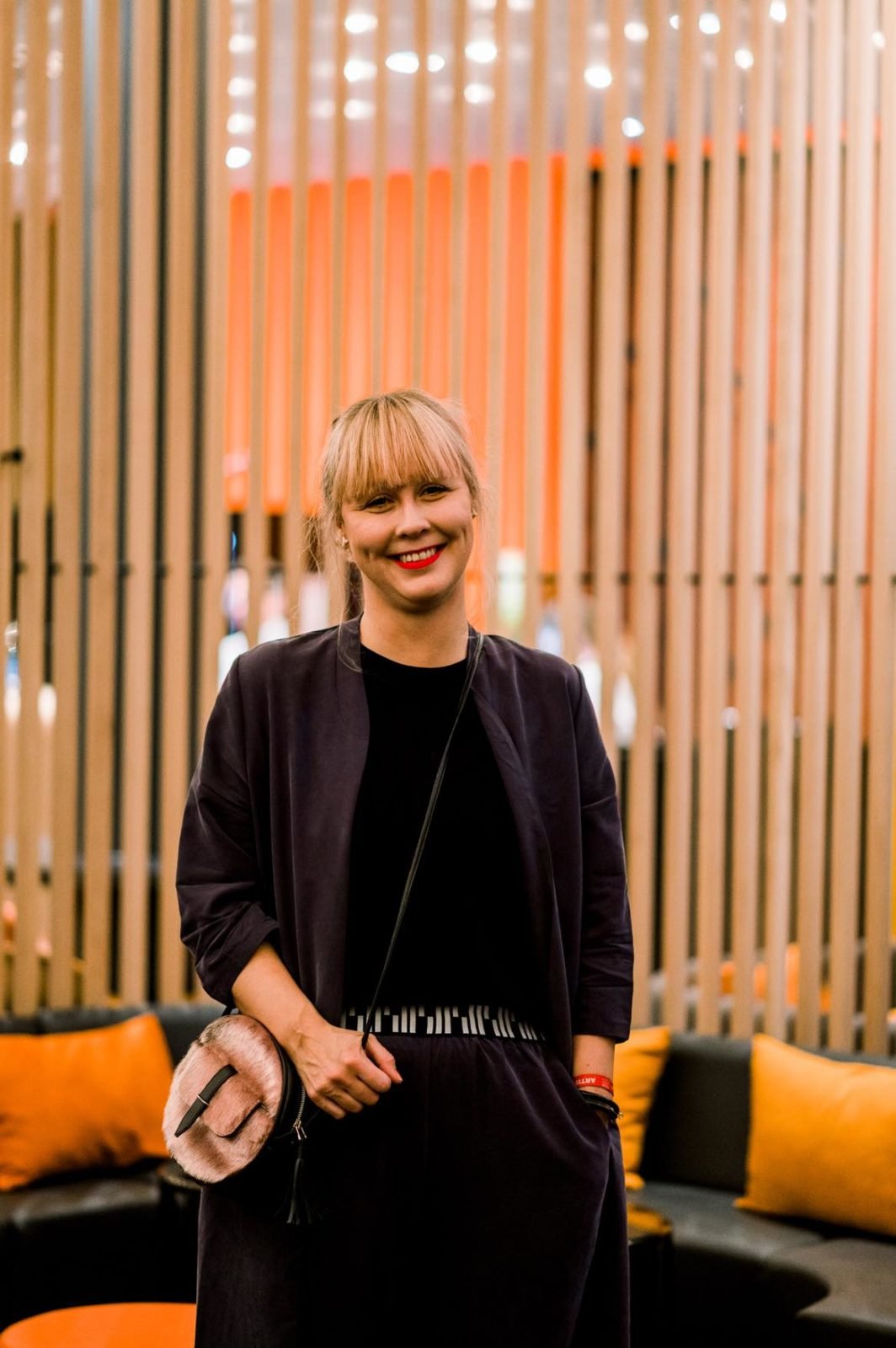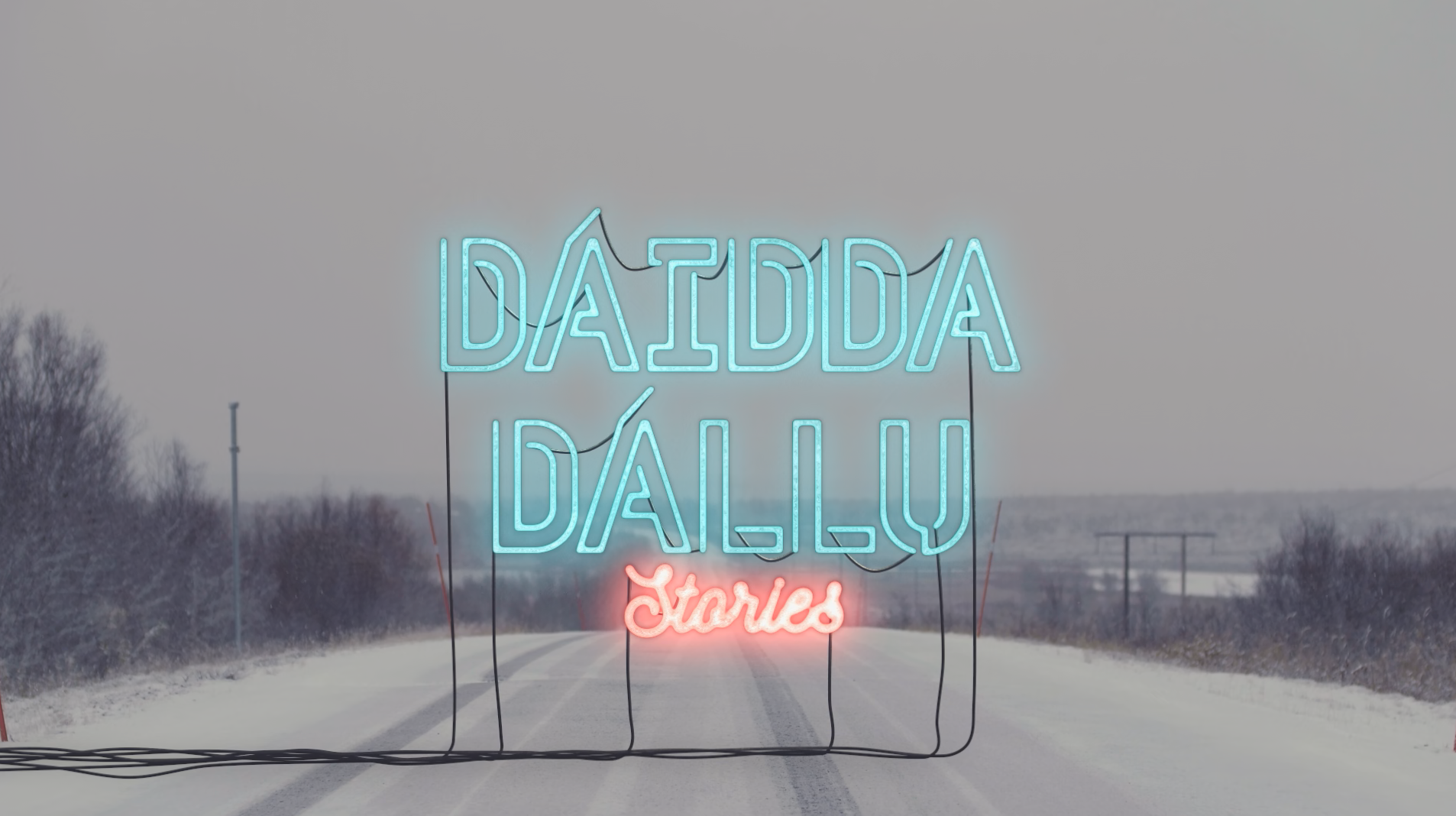Dine Fenger Lynge on the rise of Dáiddadállu
Interview with Dine Fenger Lynge, 2024
Dáiddadállu manager Dine Fenger Lynge talks to Hakapik about Dáiddadállu’s core mission and why this collective is so important for Sámi artists.
Text by Marion Bouvier, photo courtesy of Dáiddadállu
Having managed the daily business and activities of the Sámi artists collective since 2018, Dine Fenger Lynge, the manager of Dáiddadállu, displays both a pragmatic approach to running the organization and a clear passion for the job. She regularly praises the Dáiddadállu founders for their dedication and for being visionary leaders that worked tirelessly to bring the collective to its current standing. For Lynge, the collective is “in the spirit of Mázejoavku”. It embraces an Indigenous way of working collectively, making the best uses of available resources, and being artistically driven and politically engaged.
From modest beginnings, with just two founding members and two fellow artists joining early on, no money and no dedicated space, Dáiddadállu has grown into an established and well-respected organization that has too many artist partners requests to accommodate them all, a physical space to host its activities, and a large network both regionally and internationally.
First things first, what does Dáiddadállu mean?
– It’s a bit hard to translate it as one word in English, but “dáidda” means “art”, and “dállu” denotes a place of being, such as a house or a building.
Dáiddadállu is a house of art, a Sámi art network that advances Sámi cultural soverignity and promotes decolonial worldbuilding.
When and how was Dáiddadállu started?
– It was started in 2014 by Máret Ánne Sara and Elle Sofe Sara; both are Sámi artists working internationally and living here in Guovdageaidnu. They really needed a community of artists to talk to, meet with and develop their creativity together. Back then, there were not so many artists here in Sápmi, and since we live across national borders, there’s this big geographical distance between Sámi artists living in different places.
– Máret Ánne and Elle Sofe were soon joined by Elle Márjá Eira, Ann-Sofie Kallok, Anitta Suikkari and Anja Saiva Bongo Bjørnstad. Then the collective started to grow quickly. They received lots of requests from people wanting to join, not only from local artists but also from other places. And after a while, suddenly there were 12 artists in the collective.
How did the collective develop further after the first years?
– When I joined in 2018, they didn’t have any resources, it was all voluntary work. They worked hard to develop the concept of Dáiddadállu, and what it was supposed to aim for. It was a lot of administrative work as well, and they felt it in their bones. The founding members had been working on developing the collective for several years and they were quite exhausted. It was a lot of work, working with big projects and having a lot of stressful administrative work. They realized that they really needed a big building to make space for the artists to develop their projects, not a gallery but more of a working space to produce art and a place to meet. Already then, there were many meetings between artists taking place, but not many people had time to really work on developing Dáiddadállu further, apart from Máret Ánne and Elle Sofe. The two of them are very visionary, and from the start they had high ambitions for Dáiddadállu.
Fun fact: In the last minutes of the legendary Mázejoavku, it appears that the artists had to give up when the administrative work became overwhelming after 4-5 years of activity. In Dáiddadállu, they also decided to hire an administrative manager after 4-5 years!
– If I knew back then, in 2018, how big of a job it was going to be, it would maybe have been another story! It has been an amazing journey though, and we have been largely successful – because we have been working our asses off! When I came in, I was amazed that the founders and artists had managed to accomplish so much. There was a really good spirit.
How were your first years working with the collective?
– The first project we initiated after I was recruited was to increase the artists’ visibility by making 17 short introduction films. The films were made by our former artist partners, Forest People. The goal was to introduce the artists as authentically as possible to those who may want to contact them. We wanted to use the forces we already have –all these interdisciplinary artists using different mediums who have so much to offer.
– Our goal was to find out what Dáiddadállu could be and could do for the artists, in other words, how we could serve them without being their personal managers, because we didn’t have the capacity to do that. We would also organize lots of workshops depending on what the artists asked for, for example how to write an application, finances, etc. One difficulty we had was; how do we decide who is a professional artist? We didn’t really have the capacity to make this choice. That’s why we stopped accepting new members once we reached 21 members. From that period on, we received many requests, both regionally and internationally, so there was much to do!
What would you say are the core missions of Dáiddadállu, to this day?
– At the same time as working with the artists, we have always been working with shows, performances, exhibitions. Each year we organize an exhibition here in Guovdageaidnu (Kautokeino) during Sámi Beassasmárkanat (Sámi Easter Festival). We also work with local cultural institutions. We must mobilize local collaborations if this is going to work, because most actors in the cultural field in Sápmi have very little resources to count on. The strength we have is our artists: we have collaborators and a link to almost every artist in Norway, and that’s great.
In which ways would you say that Dáiddadállu is specifically Sámi?
– There’s a general difference between the Norwegian art scene and Sámi art. We needed this space for artists, anchored in Sámi sovereignty - that was very important. In Norway, Sámi artists keep having to first explain the art history of Sápmi before they even go into the artistic questions, and that is a problem. It’s not like you can just be an artist on the national scene, because of the colonial system. It’s so horrific that there is so little knowledge in Norway about Sámi art! As a collective we must protect our artists and filter through the requests we get, because so many of them are just like, “We don’t know anything about the Sámi, but we really want to have Sámi art.” It’s a very typical thing we get, and our work is also to go through these requests so that the artists don’t always have to serve something that doesn’t serve them.
You talked earlier about the interdisciplinary aspect. You said that Sámi artists tend to use several mediums: isn’t it also more of a way of life?
– I think indeed that’s one big difference I see between the art world in general and Sámi art: it’s not just a product, or visual art that is just about the exterior, if you know what I mean. For most professional artists in Sápmi, the whole production is made by the artist from beginning to end, and duodji is a good example of that: you have to collect the materials, you refer to a tradition or stories, and you also create the final product. It’s a way of thinking.
– I think the Scandinavian art scene is very material-oriented, it's all about materialism. It's not so much about the story, it’s more about how good you are at creating. Whereas for Sámi artists, although they are also very modern, they have an awareness of the culture, of the history, of the stories. It’s not just about the product, it’s a lot about the process behind the product.
I was wondering about the difference between daidda and duodji. Is it important for Sámi artists?
– Talking about the differentiation between daidda and duodji, that’s a very Western way of thinking. You can’t really adapt these terms into the categories of Western thinking, which tries to separate and classify things in ways that do not really apply to Sámi culture. In the first place, to assess these “categories” or define what is “daidda” and “duodji” you should ask Indigenous artists themselves. But that is an interesting question. You should interview Gunvor Guttorm about this.
Especially in the past years, there has been increasing focus on Sámi art and Indigenous art in Scandinavia and in the world. I would say Norway has been really slow to catch up. It seems other parts of the world, such as Canada, were much earlier in understanding the importance of Indigenous art.
– Yes, it has been quite a journey. I think that the Sámi Pavilion has contributed a lot to this, but also Indigenous art has always been very international. For Sámi artists, the history behind the art they make is very present. And the interconnectedness of the stories Sámi artists tell is also true in many Indigenous cultures.
– We are definitely receiving lots of requests these days. And it has also opened our access to other artistic institutions, especially Indigenous institutions. Suddenly in these past few years, we haven't felt that alone. Because when I started, it was weird to feel that what we were doing was so unique. But then I realized that we are embedded in a very colonial system, and all the institutions in the art field are so colonialized. There’s often no space for Indigenous artists in this colonial way of working because it’s so much about power relations.
Could you say a bit more about the space you moved into in 2023, what will be its main aims and functionalities?
– The first aspect for this space is for Sámi artists to rent a space where they can develop and produce art projects. Then it will also be a place to show art, although not as a gallery space, but a place to organize our own exhibitions, a kind of showroom. And lastly, it’s a space to gather people, to have space for collaborations, conferences, meetings, etc. We are very happy to finally have this amazing space.
– Last year it was all about professionalizing Dáiddadállu’s organization to become a sustainable working space for our artists. Next week we are launching our new website, and concluding our long-term project entitled “Product development and innovation of Sámi art and artists”
– Last but not least, Dáiddadállu is celebrating 10 years of existence this year! We will be celebrating with interesting interdisciplinary co-productions and exhibitions. We have a premiere at the Sámi beassasmarkanat very soon and are looking forward to welcoming people to Dáiddadállu.
This article was updated 07.02.2023.

















